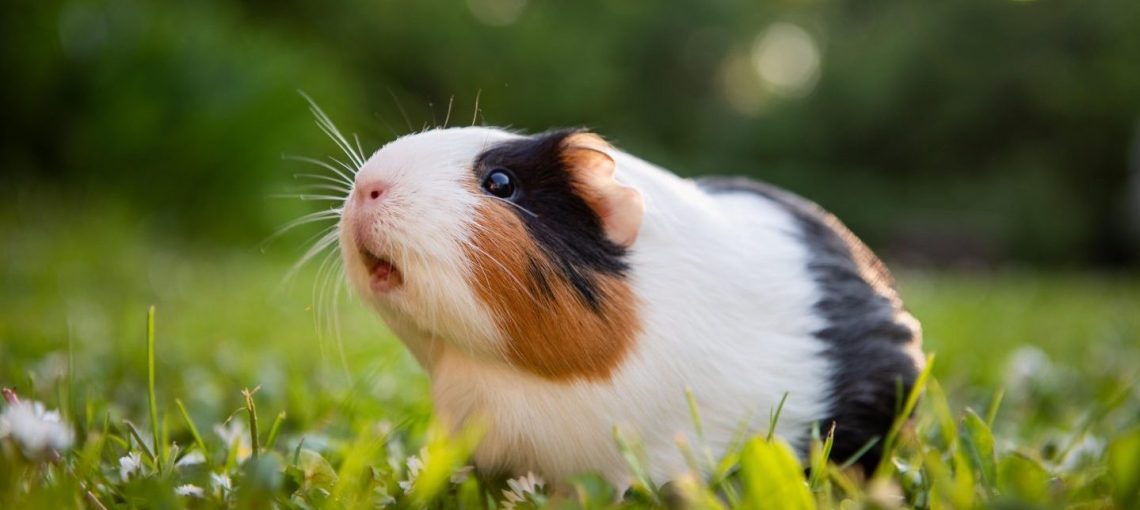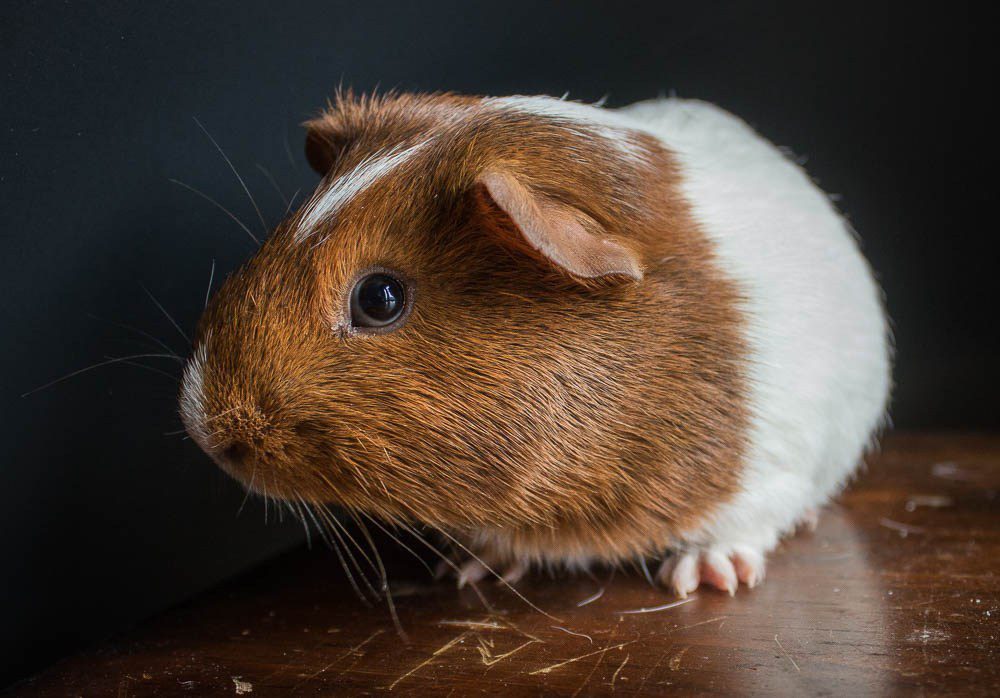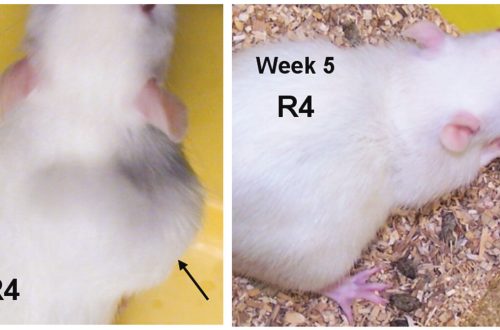
domestic guinea pigs
According to scientists, guinea pigs as a species appeared about 35-40 million years ago. In 9-3 millennium BC. Indians of Central and South America began to domesticate wild guinea pigs. The Incas sacrificed guinea pigs to the sun god. Today, in addition to being a favorite pet for many, guinea pigs are also of great benefit to science, they are bred in vivariums of research institutes and various experiments are carried out on them.
Guinea pigs are pets that are completely unpretentious in terms of care and maintenance, love people very much, are attached to the owner and have a very funny appearance.
A guinea pig is easier to keep than a dog or cat, and this animal brings no less aesthetic pleasure. The dog should be regularly taken for a walk in any weather; during a walk, especially in the rain, it gets dirty and has to be washed in the bath. True, the cat does not need a walk, she has enough room, but she likes to sharpen her claws on upholstered furniture and after a while makes her look untidy.
The guinea pig is another matter. It requires only a little attention and a little space for the cage, it is unpretentious, you can always buy food for it, care is not difficult and takes a little time every day. These animals are calmer than dogs and even cats and have many positive qualities that are very valuable at home. Self-care for them can be trusted to children over 8-9 years old, since guinea pigs, as a rule, belong to good-natured, tame animals.
Contrary to their name, guinea pigs are usually very afraid of water and are very distantly related to ordinary pigs and piglets (although that is what they call small, newborn guinea pigs – piglets). In fact, a guinea pig is a rodent belonging to the family of pigs (Caviidae), which combines animals of an outwardly two-fold species: some look like guinea pigs, while others (mara) are longer-legged. There are 23 known species, all of which are found in South America.
According to scientists, guinea pigs as a species appeared about 35-40 million years ago. In 9-3 millennium BC. Indians of Central and South America began to domesticate wild guinea pigs. The Incas sacrificed guinea pigs to the sun god. Today, in addition to being a favorite pet for many, guinea pigs are also of great benefit to science, they are bred in vivariums of research institutes and various experiments are carried out on them.
Guinea pigs are pets that are completely unpretentious in terms of care and maintenance, love people very much, are attached to the owner and have a very funny appearance.
A guinea pig is easier to keep than a dog or cat, and this animal brings no less aesthetic pleasure. The dog should be regularly taken for a walk in any weather; during a walk, especially in the rain, it gets dirty and has to be washed in the bath. True, the cat does not need a walk, she has enough room, but she likes to sharpen her claws on upholstered furniture and after a while makes her look untidy.
The guinea pig is another matter. It requires only a little attention and a little space for the cage, it is unpretentious, you can always buy food for it, care is not difficult and takes a little time every day. These animals are calmer than dogs and even cats and have many positive qualities that are very valuable at home. Self-care for them can be trusted to children over 8-9 years old, since guinea pigs, as a rule, belong to good-natured, tame animals.
Contrary to their name, guinea pigs are usually very afraid of water and are very distantly related to ordinary pigs and piglets (although that is what they call small, newborn guinea pigs – piglets). In fact, a guinea pig is a rodent belonging to the family of pigs (Caviidae), which combines animals of an outwardly two-fold species: some look like guinea pigs, while others (mara) are longer-legged. There are 23 known species, all of which are found in South America.

In the homeland of guinea pigs, they are called aperea, aporea, kui. For the first time they were domesticated by the Indians of the Inca tribe, who not only tamed them as cute pets, but used them for food and for sacrifices. The Indians believed that the guinea pig pulled the disease. To this day, large guinea pigs (weighing up to 2500 g) are bred as meat animals in Peru, Bolivia, Colombia and Ecuador. The closest wild relative of our guinea pig, Cavia cutleri, comes from the dry valleys of the Andes. These animals live in groups of 5-15 individuals in burrows, they are very social animals, loneliness is detrimental to them, which is why experts insist on the joint keeping of domestic guinea pigs (at least two same-sex individuals), and in some European countries single keeping is generally prohibited pigs.
In nature, cavia breed all year round. Pregnancy lasts approximately 65 days. The female brings from 1 to 4 cubs, which she feeds with milk for 3 weeks. Animals reach sexual maturity at the age of 2 months. In domestic guinea pigs with reproduction, things are about the same.
In English, the name of guinea pigs sounds like “guinea pig” or “cavy”. “Guinea pig” – because earlier the ships that carried guinea pigs from Latin America crossed the Atlantic Ocean on the way and entered Guinea, located in Africa. It turns out that Guinean ships brought pigs to Europe.
Since guinea pigs belong to the largest order of mammals – the order of rodents – they have an extremely peculiar structure of the dental system. The upper and lower jaws have one pair of incisors, they are very large, devoid of roots and grow throughout the life of the animal. Their free end is chisel-like pointed, the front wall is covered with a thick layer of very hard enamel, and the side and back sides are covered with a thin layer, or they are completely devoid of enamel, as a result of which the incisors grind unevenly and always remain sharp. Due to this feature, guinea pigs need to constantly gnaw something, therefore, in addition to food, branches of fruit trees are placed in their cage.
Thus, guinea pigs are cute and fairly easy to keep animals, and even children can safely buy such a pet. According to our observations and reviews of breeders, you can safely buy a guinea pig for a child from seven years old. Feed the pig three times a day and pour fresh water into the drinker, and once every 5-7 days, clean the cage (albeit with partial help from adults), children of this age will already be able to do it themselves. But the presence of your own pets, for which you take care of yourself, great forms a sense of responsibility and duty and develops independence in children.
In the homeland of guinea pigs, they are called aperea, aporea, kui. For the first time they were domesticated by the Indians of the Inca tribe, who not only tamed them as cute pets, but used them for food and for sacrifices. The Indians believed that the guinea pig pulled the disease. To this day, large guinea pigs (weighing up to 2500 g) are bred as meat animals in Peru, Bolivia, Colombia and Ecuador. The closest wild relative of our guinea pig, Cavia cutleri, comes from the dry valleys of the Andes. These animals live in groups of 5-15 individuals in burrows, they are very social animals, loneliness is detrimental to them, which is why experts insist on the joint keeping of domestic guinea pigs (at least two same-sex individuals), and in some European countries single keeping is generally prohibited pigs.
In nature, cavia breed all year round. Pregnancy lasts approximately 65 days. The female brings from 1 to 4 cubs, which she feeds with milk for 3 weeks. Animals reach sexual maturity at the age of 2 months. In domestic guinea pigs with reproduction, things are about the same.
In English, the name of guinea pigs sounds like “guinea pig” or “cavy”. “Guinea pig” – because earlier the ships that carried guinea pigs from Latin America crossed the Atlantic Ocean on the way and entered Guinea, located in Africa. It turns out that Guinean ships brought pigs to Europe.
Since guinea pigs belong to the largest order of mammals – the order of rodents – they have an extremely peculiar structure of the dental system. The upper and lower jaws have one pair of incisors, they are very large, devoid of roots and grow throughout the life of the animal. Their free end is chisel-like pointed, the front wall is covered with a thick layer of very hard enamel, and the side and back sides are covered with a thin layer, or they are completely devoid of enamel, as a result of which the incisors grind unevenly and always remain sharp. Due to this feature, guinea pigs need to constantly gnaw something, therefore, in addition to food, branches of fruit trees are placed in their cage.
Thus, guinea pigs are cute and fairly easy to keep animals, and even children can safely buy such a pet. According to our observations and reviews of breeders, you can safely buy a guinea pig for a child from seven years old. Feed the pig three times a day and pour fresh water into the drinker, and once every 5-7 days, clean the cage (albeit with partial help from adults), children of this age will already be able to do it themselves. But the presence of your own pets, for which you take care of yourself, great forms a sense of responsibility and duty and develops independence in children.
Is it worth getting a guinea pig
Why are guinea pigs so attractive? In our opinion, this is one of the best pets, especially for children – they are non-aggressive and never bite. What other advantages do guinea pigs have? And what are the disadvantages?





